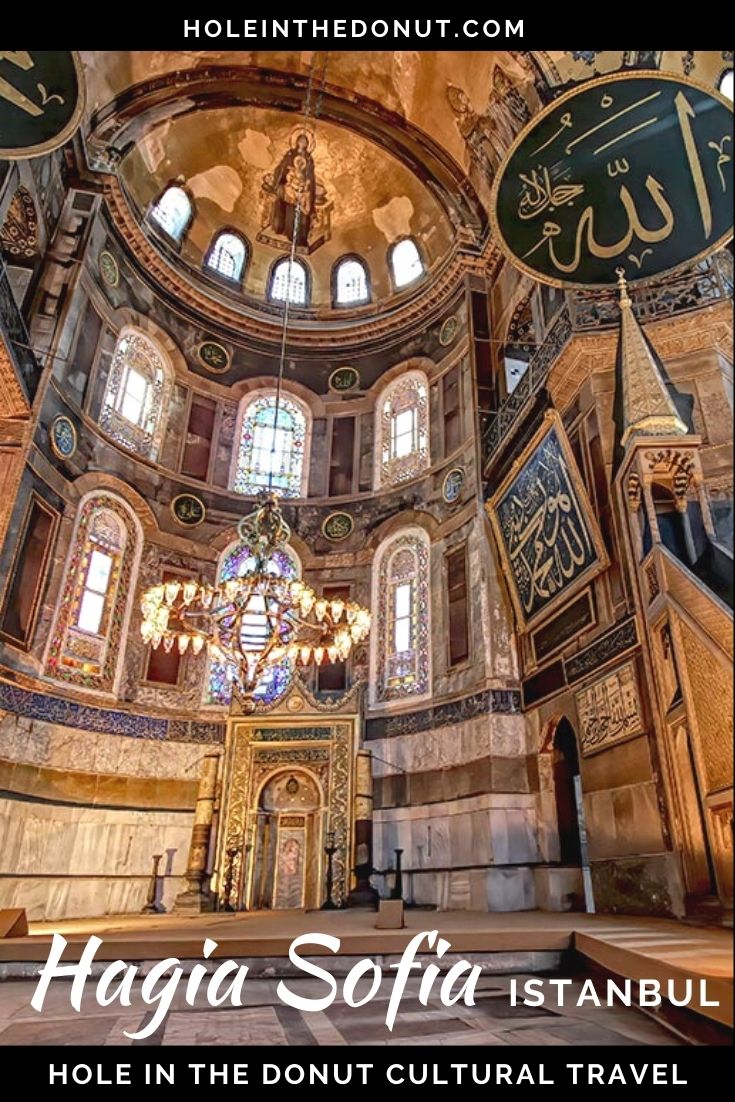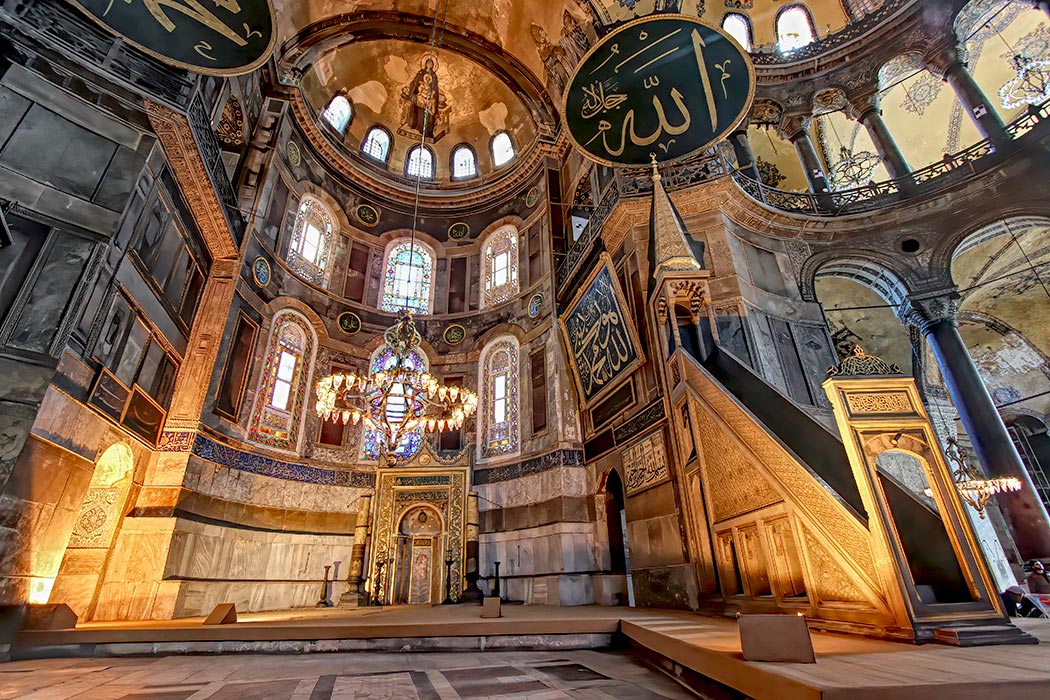The famous Hagia Sofia in Istanbul (sometimes Anglicized to Aya Sofya) is like a cat with nine lives. It was constructed in 537 as an Eastern Greek Orthodox cathedral in Constantinople (today known as Istanbul). At the time, it was it was the largest church within the Byzantine (eastern) Roman Empire, and the structure is still considered to be the pinnacle of Byzantine architecture. In 1204, during the Fourth Crusade, it was converted to a Roman Catholic Cathedral, and then restored to an Eastern Orthodox Church in 1261 upon the return of the Byzantine Empire. It remained so until until 1453, when Mehmed the Conqueror invaded Constantinople on behalf of the Ottoman Empire. Under Mehmed’s occupation it was converted to a mosque, which it remained until 1931.
Following a four-year closure, the secular Republic of Turkey reopened it as a museum. It earned UNESCO World Heritage Site status in 1985 and has been the most visited site in Istanbul for years. In July of 2020, Turkish president Recep Tayyip Erdogan ordered the reclassification of Hagia Sophia as a mosque. The first Islamic prayer service in nearly 90 years was held at Hagia Sophia on Friday on July 24, 2020. Ten days prior to the service, UNESCO stated it “deeply regrets the decision of the Turkish authorities, made without prior discussion” and called for the universal value of World Heritage to be preserved. So far, the Turkish government has refused to respond to the concerns of UNESCO. Having successfully survived seven lives, it remains to be seen whether the Hagia Sophia has another two lives waiting in the wings.



Hagia Sophia is stunning, and the angle from which you shot this photo really brings it out.
Thanks Rhonda – I was very lucky to grab this shot with no people around.
love to go to church at st. Mary’s bath maine because it’s so beautiful//kenneth